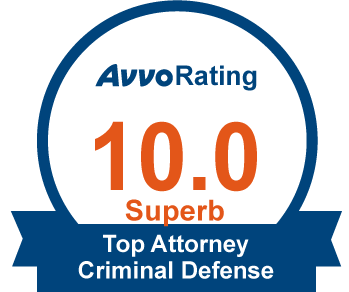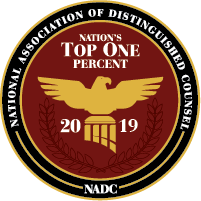Although there is no specific law under the Penal Code that criminalizes viewing or watching child pornography, it is an offense to possess, distribute, produce, sell, or distribute materials that show minors engaging in sexual activities. These allegations could damage your reputation even if you are not yet guilty of the crime, affecting your professional image.
The worst mistake you can make if you are under arrest, under investigation, or charged as a suspect in a child pornography case is to deal with or interact with the police and prosecutor without a defense attorney. You will need an attorney’s early intervention in your unique criminal case to build defenses that can help you stand a chance of securing a desirable outcome.
With several years of experience defending clients with sex-related offenses, we at the Law Offices of Anna R. Yum can help if you are under investigation or charged with a child pornography offense in San Diego. We understand the seriousness of this offense in the eyes of the law and will strive to obtain the best outcome in every stage of the prosecution process.
An Overview of Child Pornography Laws
Several statutes under the Penal Code (PC) address child pornography crimes, providing a legal framework to help combat this heinous offense, including:
- PC 311
PC 311 is the primary law that addresses offenses involving child pornography. This law makes it a crime to produce, possess, and distribute child pornography knowingly. In other words, this statute forms the foundation or backbone of the child pornography statutes discussed below.
- PC 311.1 and PC 311.2
PC 311.1 and PC 311.2 make it illegal to knowingly possess, send, produce, transport, or duplicate pornographic materials involving a child with the criminal intent or motive to distribute them.
- PC 311.3
PC 311.3 makes it unlawful to knowingly print, develop, exchange, or duplicate any child pornographic material or content.
- PC 311.4
According to PC 311.4, it is a crime to employ, hire, coerce, use, or persuade an under 18 to participate in any part of the production or shooting of child pornographic content.
- PC 311.10
According to PC 311.10, it is illegal to advertise obscene or offensive child pornographic content for sale or distribution knowingly.
- PC 311.11
PC 311.11 makes it unlawful for any person to possess or have control over child pornography where the cast is a minor.
Based on the legal definition of these child pornography statutes, various questions arise about the meaning of the following terms in the eyes of the law:
Child Pornography
For the sake of these statutes, “child pornography” is any material or matter showing or depicting sexual activity or conduct with a minor (a person aged below 18 years), including the following:
- Negatives, slides, and photographs
- Videotapes
- Films
- Computer-generated imagery
Sexual Conduct or Activity
Sexual conduct or activities include acts like oral copulation, masturbation, anal intercourse, or sexual intercourse.
Knowingly
Each child pornography statute has the term “knowingly,” which is a crucial element of the crime. For the sake of these statutes, the term “knowingly” means:
- You were aware of the nature of the matter or material you were transporting, advertising, or possessing
- You were aware the material in question depicted a minor engaging or participating in sexual activities
Obscene
For the sake of PC 311.10, “obscene” materials or content are anything that:
- Describes or shows sexual conduct or activities in an offensive manner
- A reasonable, sober person is likely to conclude that the content lacks scientific, artistic, or political value
- An average sober person would likely conclude that it satisfies a voyeuristic desire. A voyeuristic desire is a shameful or morbid interest in sex, nudity, or excretion.
The specific child pornography offense the prosecutor will file against you will depend on the circumstances and the facts of your unique case.
Potential Penalties for a Child Pornography Charge Conviction Under PC 311
Most cases of child pornography will attract either felony or wobbler charges. When the prosecutor files your child pornography case as a wobbler, it means you could face felony or misdemeanor penalties, depending on the specific facts of your case and criminal record.
When charged as a misdemeanor, a child pornography charge conviction under PC 311 carries the following sentence:
- Up to $2,500 maximum fine
- Up to one (1) year of jail time
- Misdemeanor probation
However, if your child pornography case is a felony, your potential sentence upon conviction could include up to three (3) years of jail time and hefty fines. Depending on the facts of your case and your attorney’s mitigating arguments at the sentencing hearing, the court could sentence you to probation instead of jail time.
When the court awards you probation instead of jail time, you should be ready to comply with various terms and conditions, including:
- Perform community service
- Stay arrest-free or crime-free
- Enroll in a drug and alcohol treatment program
- Submit to random and regular drug testing by a court-appointed probation officer
- Consent to regular police searches
- Attend counseling sessions
Other Consequences Associated With a Conviction for Child Pornography
In addition to the above legal penalties, a child pornography charge conviction will attract other detrimental consequences that can negatively affect the quality of your life. Some of these consequences include:
Inclusion in the Sex Offender Registry
According to PC 290, if you have a conviction for certain sex crimes, you must register as a sex offender, even after serving your sentence. That means you must register with your nearest local law enforcement agency annually within five days of your birthday or five days after changing your residence.
As simple as it seems, these requirements can affect your ability to live comfortably and where you can reside. Since child pornography is a Tier 3 offense, you will have a lifetime legal duty to register and re-register as a sex offender. For the sake of PC 290, “registration” means keeping law enforcement agencies informed of your whereabouts, including your:
- Residence
- School
- Workplace
Deportation
Since child pornography is a crime involving moral turpitude, a conviction will attract negative immigration consequences, including deportation, which can negatively affect your future, especially if you are here for education or business.
Firearm Restrictions
If you are guilty of felony child pornography, you could face strict firearm restrictions, even after serving your sentence and paying your dues. According to PC 29800, it is unlawful for felons or people with active felony cases to possess, buy, carry, or receive a firearm. A conviction under this statute could attract up to three (3) years of jail time.
A Criminal Record
A conviction for a child pornography charge under PC 311 will remain part of your criminal record unless you obtain an expungement. Having a criminal record for a severe offense like child pornography can make it challenging to do the following:
- Qualify for reliable employment
- Obtain professional licenses, especially if you are a pediatrician or teacher
- Secure an apartment to live in
- Secure education loans
- Qualify for admission to universities
How Your Defense Attorney Can Challenge a Child Pornography Charge
Although it is a severe offense in the eyes of the law, having a pending child pornography charge does not mean a conviction is unavoidable. Like any other criminal charge, you have a legal right to challenge the prosecutor’s allegations against you at trial for the best possible outcome.
A reliable attorney will take time to analyze every detail of your unique case and interview eyewitnesses to help him/her craft clear defenses that can help you obtain an acquittal of the charge or lighter penalties upon conviction.
Below are some of the common legal defenses your defense attorney could assert at trial to challenge the child pornography allegations you are up against for the best attainable outcome:
There Was No Child Pornography
Remember, child pornography has a clear and specific definition under PC 311. Therefore, it would be a valid and acceptable defense to argue that the matter or material you had in your possession or shared was not pornographic. The court will likely dismiss your child pornography charges if the material in question does not meet the legal definition of child pornography under PC 311.
You Did Not Act Knowingly
Sufficient proof and evidence that you knowingly and willingly accessed, possessed, distributed, or produced explicit materials involving minors is necessary for a conviction under PC 311. There are chances the judge could drop or reduce your charges if your defense attorney can prove to him/her that you did not know you had explicit materials in your possession or that you lacked the criminal intent to commit an unlawful activity.
The Victim is Not a Minor
The court cannot convict you under PC 311 if the victim does not meet the legal definition of a minor. As mentioned above, a minor is anyone below eighteen years of age. Therefore, you would not be guilty under PC 311 if the involved person or victim is eighteen or older.
You are a Victim of an Unlawful Search
One of the most crucial rights you have under the 4th Amendment of the Constitution is the legal right to stay free from unlawful searches. If arresting officers obtained any evidence against you through warrantless searches of your personal belongings, vehicle, or laptop, your attorney can challenge the reliability and admissibility of that particular evidence in court.
The court will likely exclude any illegal evidence the prosecutor has against you from your child pornography case, meaning it will not work against you at trial.
Police Entrapped You
Unfortunately, the issue of police entrapment is not uncommon in these types of cases. Entrapment occurs when the police lure you into committing an offense that you would not otherwise commit. It would be a reliable and viable defense to argue that arresting police officers coerced, persuaded, or manipulated you to commit the child pornography offense.
You Had a Legitimate Purpose
You would not be guilty of child pornography under PC 311 if you had a legitimate or lawful purpose to have the child pornographic materials in your possession. Below are examples of legitimate purposes or reasons for having explicit materials involving minors in your possession:
- Artistic expressions
- Research and education, including psychological research and academic studies
- Police investigations
- For scientific or medical purposes
The prosecutor cannot obtain a conviction against you for a PC 311 violation if you were participating in reasonable and legitimate activities mentioned above at the time of the arrest.
You are a Victim of False Accusations
False accusations are one of the causes of wrongful convictions, and a seasoned defense attorney understands this more than anyone else. When a minor is a victim of sex-related cases like child pornography, there are chances that he/she could be confused in the aftermath of the incident.
Your defense attorney can challenge the allegations you are up against by arguing that the child is confused and unaware of the identity of the actual perpetrator. For instance, that is possible if the incident occurred in an unfamiliar location. Your attorney can also argue that the child is young, making identifying or recalling the perpetrator correctly a challenging task for him/her.
In these circumstances, the court could agree that you are a victim of false accusations and dismiss or reduce your charges.
The Prosecutor’s Evidence Against You is Insufficient
A conviction for a child pornography charge requires the prosecutor to prove all the elements of the crime beyond a reasonable doubt. If your defense attorney can cast or raise doubt on the prosecutor’s case against you for lacking sufficient evidence, the court could drop or reduce your charges.
How to Obtain an Expungement After a Child Pornography Charge Conviction Under PC 311
As mentioned above, a child pornography charge will follow you and negatively affect your future even after serving your sentence unless you obtain an expungement. An expungement under PC 1203.4 can release you from most disabilities and negative consequences caused by a conviction for a criminal offense.
For instance, an expungement can increase your odds of qualifying for reliable employment because potential employers cannot discriminate against you based on expunged convictions. Unfortunately, not every person qualifies for this post-conviction relief. To qualify for expungement, your attorney must prove that:
- You have “successfully” completed your parole or probation (misdemeanor or felony probation) or obtained an early termination of parole
- You did not serve your sentence in the state prison, or you would serve your sentence in the county jail under the new realignment program under Proposition 47
- You do not have any pending criminal charges
- You are not currently on probation for any offense
Since it is a multi-step process that requires a lot of paperwork, you cannot overlook the need for an attorney when seeking to expunge your criminal record under PC 1203.4. Your attorney can prepare your PC 1203.4 petition and compile all the necessary paperwork and evidence to increase your chances of securing a desirable outcome for a fresh start.
Once your attorney files a PC 1203.4 petition, the court will hold a hearing to determine whether you are an excellent candidate for this post-conviction relief. You are likely to qualify for expungement if your attorney has evidence to prove that:
- You have received rehabilitation and are now a law-abiding citizen
- You are likely to retain a job
One of the notable benefits of obtaining an expungement is that you can legally give a negative answer when someone asks whether you have a criminal record unless you are applying for a job in a public office or as a police officer.
Sex Crimes Related to Child Pornography Offense Under PC 311
In most cases where the prosecutor lacks enough evidence to convince the court you are guilty of a PC 311 violation, he/she could file any of the following related sex crimes against you:
Statutory Rape
You commit the crime of statutory rape when you engage in sexual intercourse with a minor who is not your spouse. Even if you did not use force or the minor consented to the sexual intercourse, you could be guilty of a statutory rape offense under PC 261.5 because minors are legally incapable of consent under this statute.
Since it is a wobbler, the prosecutor could file your statutory rape charge as either a misdemeanor or a felony. When the prosecutor files your PC 261.5 violation as a misdemeanor, your penalties upon conviction could include:
- Up to $1,000 maximum fine
- Informal or misdemeanor probation
- Up to one (1) year of jail sentence
Conversely, when charged with a felony PC 261.5 violation, your sentence upon conviction at trial could include:
- Up to $10,000 maximum fine
- Formal or felony probation
- Up to three (3) years of jail sentence
Lewd Acts With a Minor
PC 288 defines the crime of lewd or lascivious acts with a minor or child, also known as child molestation. According to this statute, it is unlawful to touch or cause a child aged 14 years or younger to touch himself/herself or another person for sexual arousal or gratification purposes. It was worth noting that you would be guilty of a PC 288 violation even if any of the following is true:
- The touching was through the minor’s clothes and not his/her bare skin
- You did not touch the minor on any sexual organ of his/her body
- The minor was the one touching himself/herself through your instructions
A PC 288 violation is chargeable as a felony, but the penalties you will face upon a conviction under this statute will depend on various factors, including:
- Whether you used force to accomplish your purpose
- The minor’s age
- Whether you have a record for sex crimes involving minors
Generally speaking, a conviction under PC 288 will attract up to ten (10) years of jail time and a fine not exceeding $10,000. Unfortunately, upon a PC 288 violation conviction, there is a chance you could be ineligible for probation, meaning you will serve your entire sentence behind bars.
That is particularly true if the prosecutor can prove that you used force to convince the minor to engage in the lewd acts.
Revenge Porn
According to PC 647(j)(4), it is a crime to unlawfully post or share another person’s sexually explicit videos and images on the internet without his/her consent with the criminal intent of causing him/her to experience emotional distress.
For instance, you could be guilty under this law if the prosecutor can prove that you intentionally posted naked videos of an ex-lover on Facebook after a bitter breakup or divorce. If the prosecutor obtains a conviction against you for revenge porn under PC 647(j)(4), you should expect the following misdemeanor legal penalties:
- A fine not exceeding $1,000
- Detention in the county jail for not more than six (6) months
- Misdemeanor probation
The specific related offense the prosecutor will file against you instead of or alongside the child pornography charges will depend on the available facts and circumstances of the case. The rule of thumb when you are under arrest or charged with a child pornography offense or any other crime, for that matter, is to contact a defense attorney as soon as possible.
Your defense attorney could help you avoid a child pornography charge conviction or strive to obtain a desirable outcome, including a reduced sentence if a conviction is inevitable. That is why it is advisable to take your time to find a reliable defense attorney to represent you in your unique case.
Here are a few tips that can lessen your options for finding a dependable defense attorney without wasting time. Consider your prospective attorney’s:
- Location and work schedule
- Qualifications and experience
- Reputation and credibility
- Licensing credentials
- Communication skills
- Cost of services
Find a Reliable Defense Attorney Near Me
Child pornography laws are harsh because of the need to protect our children from abuse and exploitation, which is understandable. If you are under arrest or have a pending child pornography charge, it could seem like your world is falling apart. While it is natural to worry when dealing with police officers and prosecutors as a suspect in a sex-related crime, you have options.
Our profound team of defense attorneys at the Law Offices of Anna R. Yum can intervene and help you compile the best defenses that could convince the judge to drop or reduce your charges. Call us at 619-493-3461 to schedule your first-obligation free consultation with our attorneys, wherever you are in San Diego.











